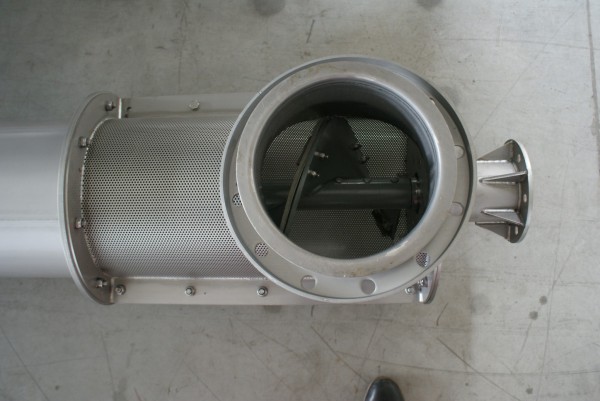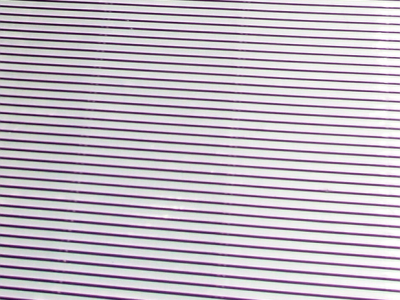

A device for separating solid contaminants, protecting pumps. Installed vertically in pumping stations and collectors. Wastewater leaves the cylinder through perforated walls, and larger impurities are carried away by the screw. Vertical sscreens are more reliable than basket screens.
A device designed for coarse separation of solid contaminants. Usually used as the first to protect pumps against mechanical damage.
Installed vertically in pumping stations and larger collectors. Wastewater flowing by gravity into the vertical cylinder leaves it through perforated walls. Larger contaminants remaining in the cylinder are carried to the surface by the screw, through the dewatering and thickening zone to the discharge.
Vertical screens are a modern alternative to basket screens, surpassing them in terms of reliability and efficiency of operation.
Combining a screen, conveyor and screenings dewatering insert in one device results in savings in space, energy consumption and other operating costs. The well-thought-out integration of individual elements ensures clean operation and prevents secondary emission of contaminants.
The device is prepared for year-round operation outdoors. The housing conceals the heating system to prevent icing, all sensitive parts are protected from water and frost.
Each vertical screen is custom designed to fit the specific project. EMI designers select the size of the slots, the height of the device, the dimensions of the drainage zones and many other parameters so that the device offers maximum efficiency and fits perfectly into the local conditions.
Mechanical separation, i.e. separating solid elements from the wastewater stream

Most industrial wastewater streams contain solids that must be removed before wastewater reaches the treatment plant equipment. Removal of solids is necessary to protect pumps, mixers, sensors and other system components from blocking or even damage. In EMI installations, we use two stages of mechanical pre-treatment: coarse and fine. Coarse pre-treatment removes the largest elements, with a cross-section above 20 mm, and is carried out at the inlet to the first pumping station, before wastewater comes into contact with any pump. Coarse separation devices include vertical screens, basket screens and step/hook screens. The purpose of fine mechanical pre-treatment is to further remove solids, with their cross-section dropping below 3 mm, most often to 1 mm, although in some cases it is appropriate to use even smaller cross-sections (up to 0.25 mm). At this stage, rundown and rotary screens are used. The latter type of screen is used in a system with external or internal inflow. Mechanical pre-treatment involves very low costs, mainly resulting from the consumption of water rinsing the screens. No reagents are used, and energy consumption is minimal. Mechanically pre-treated wastewater is suitable for further treatment by physico-chemical and biological means.